Status of wild species: general status report overview 2003 to 2008
Species at Risk Act
General Status Report
Overview Document
2003 - 2008
Contents
- Introduction
- Findings from the Wild Species 2005 Report
- Comparing Results from Wild Species 2000 and 2005
- General Status Rank Updates
- Next Steps
- Acknowledgements
- Appendix I: Process to Develop the Wild Species Report Series
- Appendix II: Comparison of General Status Categories and COSEWIC Status Categories
- Endnotes
Introduction
Species at Risk Act Background
The purposes of the Species at Risk Act (SARA) are to prevent wildlife species from being extirpated1 or becoming extinct, to provide for the recovery of wildlife species that are extirpated, endangered or threatened as a result of human activity, and to manage species of special concern to prevent them from becoming endangered or threatened.
The Act defines the processes for assessing the status of species; identifying and listing species as extirpated, endangered, threatened or special concern; and protecting listed wildlife species, their critical habitat and residences.2
Seaside Birds-foot Lotos ©Barbara J. Collins

Federal and provincial/territorial governments share the responsibility for the conservation and protection of wildlife in Canada. The federal government is responsible for aquatic species (i.e. fish, marine mammals and marine plants), terrestrial species situated on federal lands, and most migratory birds. Provincial and territorial governments have primary responsibility for other wildlife species.
SARA General Status Reports
SARA requires that a general report on the status of wildlife species be prepared five years after section 128 comes into force (2003) and every five years thereafter. The purpose of the report is
to provide Canadians with an overview on which wild species are doing fine, which to keep an eye on, and which need to be formally assessed by the Committee on the Status of Endangered Wildlife in Canada (COSEWIC). COSEWIC is a committee of experts that assesses the national status of wild Canadian species that are suspected of being at risk of global extinction or extirpation from Canada. This document, The Status of Wild Species in Canada (SARA General Status Report 2003–2008: Overview Document), fulfils the Minister of the Environment’s obligation under SARA to provide a general report on Canada’s wildlife.
Greater Prairie-Chicken ©Bob Gress

The 2008 SARA General Status Report is based largely on the Wild Species 2005 report, prepared by a federal-provincial-territorial group of experts. It also provides an update on general status ranks3 since the release of the Wild Species 2005 report, primarily resulting from new assessments from the Committee on the Status of Endangered Wildlife in Canada.
For more detailed information about Wild Species 2005, the reader is invited to visit the Wild Species website.
For more information about the Committee on the Status of Endangered Wildlife in Canada, the reader is invited to visit the COSEWIC website.
Findings from the Wild Species 2005 Report
Wild Species 2005 presented general status assessments4 for 7732 species from all provinces, territories, and ocean regions. It includes fishes, amphibians, reptiles, birds, mammals, plants, freshwater mussels, crayfishes, odonates (i.e. dragonflies and damselflies), and one group of beetles called the tiger beetles.
Peregrine Falcon ©Dr. Gordon Court
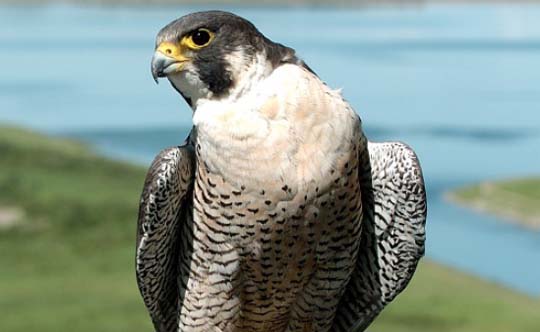
The Wild Species 2005 report indicates that overall, 70% of Canada’s wild species are ranked Secure (Table 1). This number varies considerably among groups of species. For eight of the ten groups in this report, at least 65% of species have a Canada rank of Secure. For the two remaining groups, however, this figure is much lower. Only 37% of freshwater mussels have a Canada rank of Secure, while for reptiles, only 31% of species have a Canada rank of Secure (Figure 1).
Coastal Giant Salamander ©Suzanne L. Collins
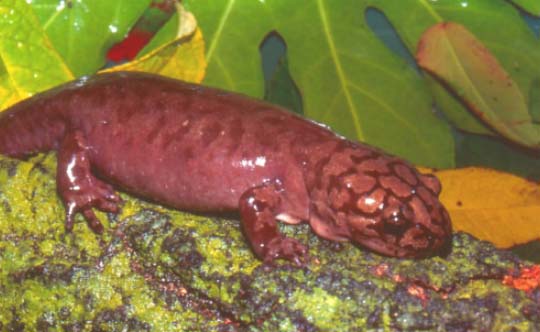
One of the issues highlighted in Wild Species 2005 is the large number of non-native or Exotic species in Canada. These are species introduced into Canada by humans. Exotic species have been brought to Canada, both deliberately and accidentally, from around the world, and can have damaging impacts on native species. Some examples of such impacts are competing for space and resources, preying on native wildlife, and introducing new diseases. Of the 7732 species assessed in this report, 16% are ranked Exotic. Of the groups covered in this report, the plants have the highest proportion of Exotic species (24%).
| Rank | All Species | Vascular Plants | Freshwater Mussels | Crayfish | Odonates | Tiger Beetles | Fishes | Amphibians | Reptiles | Birds | Mammals |
|---|---|---|---|---|---|---|---|---|---|---|---|
| Extirpated | 30 | 22 | 1 | 0 | 0 | 0 | 2 | 0 | 3 | 1 | 1 |
| Extinct | 5 | 0 | 0 | 0 | 0 | 0 | 1 | 0 | 0 | 3 | 1 |
| At Risk | 206 | 110 | 8 | 0 | 0 | 0 | 26 | 9 | 13 | 27 | 13 |
| May Be At Risk | 634 | 552 | 9 | 0 | 28 | 5 | 16 | 0 | 2 | 12 | 10 |
| Sensitive | 657 | 460 | 15 | 2 | 27 | 3 | 65 | 7 | 12 | 41 | 25 |
| Secure | 3541 | 2572 | 19 | 7 | 145 | 21 | 238 | 30 | 12 | 358 | 139 |
| Undetermined | 534 | 112 | 2 | 0 | 7 | 1 | 395 | 0 | 1 | 5 | 11 |
| Not Assessed | 465 | 30 | 1 | 0 | 0 | 0 | 434 | 0 | 0 | 0 | 0 |
| Exotic | 1254 | 1216 | 0 | 2 | 0 | 0 | 12 | 0 | 2 | 11 | 11 |
| Accidental | 406 | 0 | 0 | 0 | 2 | 0 | 200 | 0 | 2 | 195 | 7 |
| Total | 7732 | 5074 | 55 | 11 | 209 | 30 | 1389 | 46 | 47 | 653 | 218 |
Table 1: from the Wild Species 2005 Executive Summary. Definitions of general status categories are included in Endnote 3. Source: Wild Species 2005 Executive Summary.
Figure 1: Comparison of the 2005 Canada general status ranks (Canada ranks), among groups of species. Species ranked Extinct, Extirpated, Undetermined, Not Assessed, Exotic and Accidental are not shown.
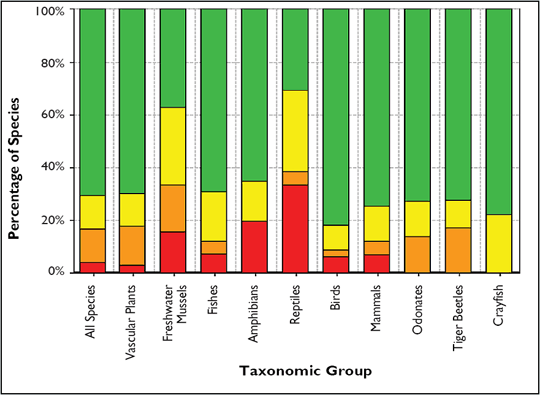
Source: Wild Species 2005 Executive Summary.
Polar Bear ©Dr. Gordon Court
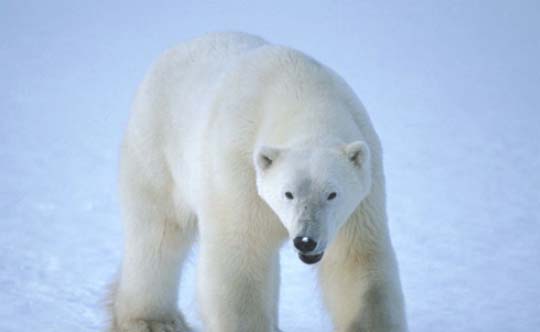
Comparing Results from Wild Species 2000 and 2005
Wild Species 2000 presented general status assessments of 1685 species and Wild Species 2005 covered 7732 species. A total of 1330 species are assessed in both Wild Species reports. Wild Species 2005 did not reassess butterflies (285 regularly occurring species in Canada); this was the primary reason that there were not 1685 species for comparison. Of the 1330 species that were assessed in both 2000 and 2005, 12% have been assessed with a different Canada rank in Wild Species 2005.
Magnolia acuminata ©Michael Patrikeev
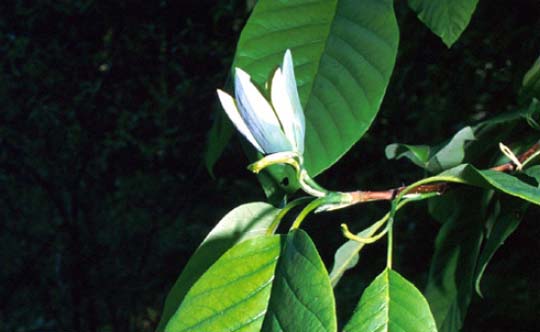
In total, 39% of the changes involved species moving into a rank of increased level of risk, 31% of changes involved species moving into a rank of reduced level of risk, and 30% involved species moving into or out of the Undetermined, Not Assessed, Accidental or Extirpated categories.
Changes in process (e.g. changes to definitions, criteria) or new or updated COSEWIC assessments led to most of the changes in Canada rank (40% and 33% respectively). Biological change since 2000 (e.g. observed change in species population) led wholly or partly to only 6% of changes. Of the 6% where change was due to biology, 50% of the species (i.e. five species) moved into a higher level of risk and 50% into a lower level of risk.
The ongoing reassessment of species, documented in subsequent Wild Species reports, will make it possible to identify trends in a species’ status over time, in other words how the species is doing over the long term.
Fowler’s Toad ©Gary Allen
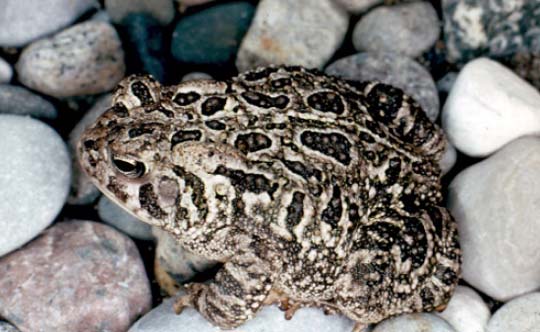
General Status Rank Updates
Since Wild Species 2005 was completed, COSEWIC has produced two annual reports that included 110 COSEWIC species assessments. As a result, 18 species included in Wild Species 2005 have since had a COSEWIC assessment5 change that led to a general status rank update. The remaining 92 COSEWIC species assessments did not necessitate rank updates. Appendix II provides a comparison of general status categories and COSEWIC status categories to demonstrate the relationship between these two assessment processes.
The rank updates for these 18 species (Table 2) do not have a significant impact on the general status analyses presented in the Wild Species 2005 report (7732 species covered in the report). Accordingly, the results and main summary tables presented in this overview document and the full Wild Species 2005 report have not been changed.
Banded Killifish ©Konrad Schmidt

The rank updates have been recorded in the General Status database, accessible through the General Status Search Tool on the Wild Species website at www.wildspecies.ca and will be included in subsequent SARA section 128 and Wild Species reports.
| Taxon | Scientific name | Common name | Canada rank in Wild Species 2005 | Rank update due to recent COSEWIC assessment |
|---|---|---|---|---|
| Odonates (dragonflies and damselflies) | Gomphus quadricolor | Rapids Clubtail | 2. May Be At Risk | 1. At Risk |
| Birds | Melanerpes erythrocephalus | Red–headed Woodpecker | 2. May Be At Risk | 1. At Risk |
| Birds | Buteo regalis | Ferruginous Hawk | 2. May Be At Risk | 1. At Risk |
| Birds | Wilsonia canadensis | Canada Warbler | 4. Secure | 1. At Risk |
| Mammals | Enhydra lutris | Sea Otter | 1. At Risk | 3. Sensitive |
| Freshwater Mussels | Truncilla donaciformis | Fawnsfoot | 2. May Be At Risk | 1. At Risk |
| Reptiles | Phrynosoma hernandesi | Greater Short–horned Lizard | 2. May Be At Risk | 1. At Risk |
| Reptiles | Glyptemys insculpta | Wood Turtle | 3. Sensitive | 1. At Risk |
| Vascular Plants | Frasera caroliniensis | American Columbo | 3. Sensitive | 1. At Risk |
| Vascular Plants | Isoetes bolanderi | Bolander’s Quillwort | 2. May Be At Risk | 1. At Risk |
| Vascular Plants | Enemion biternatum | False Rue–anemone | 3. Sensitive | 1. At Risk |
| Vascular Plants | Chenopodium subglabrum | Smooth Goosefoot | 2. May Be At Risk | 1. At Risk |
| Vascular Plants | Plagiobothrys figuratus | Fragrant Popcornflower | 2. May Be At Risk | 1. At Risk |
| Vascular Plants | Uropappus lindleyi | Lindley’s False Silverpuffs | 2. May Be At Risk | 1. At Risk |
| Vascular Plants | Centaurium muehlenbergii | Muhlenberg’s Centaury | 2. May Be At Risk | 1. At Risk |
| Vascular Plants | Carex tumulicola | Foothill Sedge | 2. May Be At Risk | 1. At Risk |
| Vascular Plants | Lasthenia glaberrima | Rayless Goldfields | 2. May Be At Risk | 1. At Risk |
| Vascular Plants | Corydalis scouleri | Scouler’s Corydalis | 1. At Risk | 4. Secure |
Rank updates fell into one of two categories:
- Since the Wild Species 2005 report was produced, COSEWIC assigned a status category of Endangered or Threatened which led to a Canada rank of At Risk (16 species).
- Since the Wild Species 2005 report was produced, COSEWIC reassessed species that were previously Endangered or Threatened as Special Concern and Not At Risk. This led to a Canada rank of at least more secure than May Be At Risk (i.e. Sensitive and Secure) (two species).
Burrowing Owl ©Dr. Gordon Court
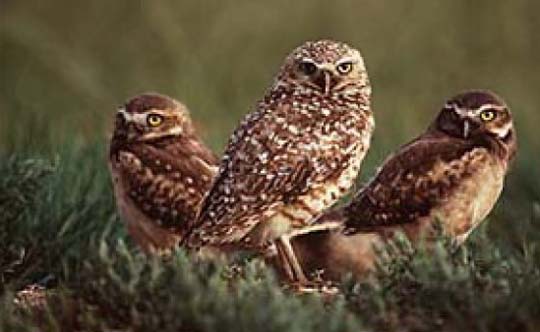
Next Steps
SARA General Status Reports
For future reports, the Wild Species reports will be prepared to meet the reporting requirements set out in the Species at Risk Act. As such, the reporting cycle for the SARA General Status Report will shift and the next SARA General Status Report will be produced in 2010.
The Wild Species 2005 report has greatly increased the number and variety of species assessed nationally. This report included 7732 species and additional groups of species. With the total number of species in Canada estimated to be more than 70,000, there are still many species left to be assessed.
Annually, the federal-provincial/territorial body that prepares Wild Species reports (in consultation with specialists) develops a priority list of species that will be ranked in upcoming reports. Future reports will expand the number and variety of species assessed, as well as continuing to update general status of species previously reported so that trends in species’ status can be tracked through time.
Blanding’s Turtle ©Jeffie McNeil
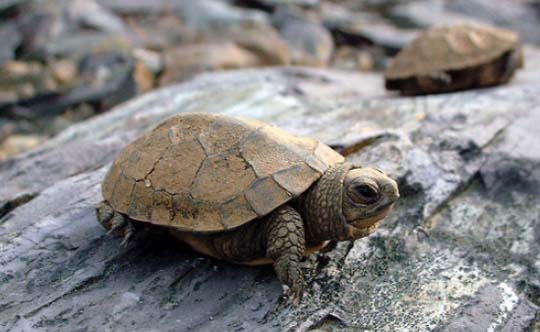
Acknowledgements
The SARA General Status Report is based largely on Wild Species 2005. A federal-provincial/territorial working group, the National General Status Working Group (NGSWG), produced this report and the Canadian Endangered Species Conservation Council released it to the public. The work of the NGSWG members, support of associated jurisdictions, and a large group of specialists across Canada are acknowledged for their contributions to the Wild Species reports.
Poweshiek Skipperling ©Robert P. Dana
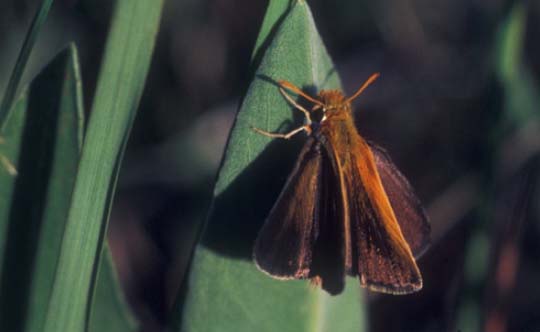
Appendix I: Process to Develop the Wild Species Report Series
To assess the general status of Canada’s wildlife species, the Canadian Wildlife Directors Committee6 created the National General Status Working Group (NGSWG) in 1998. The NGSWG is composed of representatives from each Canadian province and territory and the three federal agencies responsible for wildlife (Environment Canada, Fisheries and Oceans Canada, and Parks Canada). The NGSWG and the Wild Species reports stemmed from the 1996 Accord for the Protection of Species at Risk.7
Figure 2 displays the process to develop the Wild Species report series. The NGSWG’s provincial, territorial, and ocean region representatives are responsible for establishing lists of species that occur in their respective jurisdictions. These representatives are also responsible for gathering, compiling, and interpreting the information used to establish the provincial, territorial, or ocean region ranks for a given species. The NGSWG is responsible for assigning a Canada-wide rank: a national general status rank that interprets the overall general status of the species in Canada.
Spotted Wolffish ©Erling Svensen
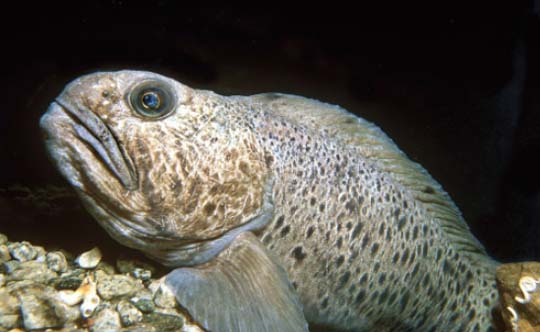
The team approach to general status assessment is especially important when carrying out provincial and territorial level assessments because the generation of Canada ranks is a “bottom-up” process with information being carried forward by the provincial/ territorial representatives to the NGSWG. In other words, Canada ranks are decided upon after the provincial/territorial/ocean region general status ranks are finalized. General status assessment team members can be naturalists, scientists, researchers, Aboriginal people or other knowledgeable people.
Although general status assessments for all groups of species are generally carried out using the same process, there are cases where circumstances require alternative approaches for a given group of species and/or within a given territory, province, or ocean region. For example, both regional and national level6 datasets are available for birds. For this group of species, Environment Canada data on migratory birds is fed into the process at both the provincial/ territorial ranking stage and the stage of assigning Canada ranks.
The NGSWG compiles the results of its general status assessments into a national database8 and periodic reports. The general status ranks are an important source of information that informs the development of the Committee on the Status of Endangered Wildlife in Canada’s9 (COSEWIC) Candidate List, which is a list of priority species for consideration by this committee.
The NGSWG has developed guidelines that include provisions for aligning a species’ general status rank with its COSEWIC status category.10 Certain COSEWIC status categories result in the automatic assignment of a specific general status rank.
Figure 2: Diagram outlining how regional ranks (i.e. provincial, territorial, and ocean region ranks) and Canada ranks are generated. Regional ranks are generated by provincial/territorial representatives or by DFO (ocean region ranks). Canada ranks are generated by the NGSWG, based on the regional ranks and additional input from specialists.
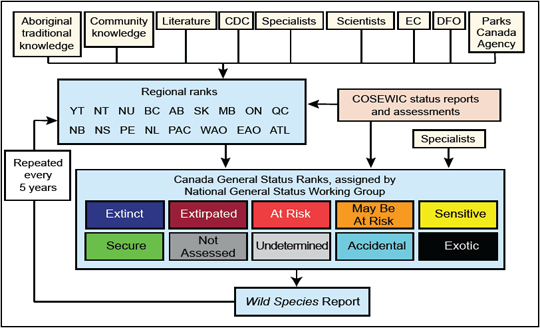
List of acronyms
-
AB -
Alberta
-
ATL -
Atlantic Ocean
-
BC -
British Columbia
-
CDC -
Conservation Data Centre (a centre that houses species data)
-
COSEWIC -
Committee on the Status of Endangered Wildlife in Canada
-
DFO -
Department of Fisheries and Oceans
-
EAO -
Eastern Arctic Ocean
-
EC -
Environment Canada
-
MB -
Manitoba
-
NB -
New Brunswick
-
NL -
Newfoundland and Labrador
-
NS -
Nova Scotia
-
NT -
Northwest Territory
-
NU -
Nunavut
-
ON -
Ontario
-
PAC -
Pacific Ocean
-
PE -
Prince Edward Island
-
QC -
Quebec
-
SK -
Saskatchewan
-
WAO -
Western Arctic Ocean
-
YT -
Yukon Territory
Source: Adapted from Wild Species 2005 report.
Appendix II: Comparison of General Status Categories and COSEWIC Status Categories
| General Status Categories (Canada Ranks) | COSEWIC Status Categories | Comments |
|---|---|---|
| 0.2 Extinct | Extinct | Equivalent. A species with a COSEWIC designation of Extinct automatically receives a Canada rank of Extinct. |
| 0.1 Extirpated | Extirpated | Equivalent. A species with a COSEWIC designation of Extirpated automatically receives a Canada rank of Extirpated. |
| 1. At Risk | Endangered | Equivalent. A species with a COSEWIC designation of Endangered automatically results in a Canada rank of At Risk. |
| 1. At Risk | Threatened | Equivalent. A species with a COSEWIC designation of Threatened automatically results in a Canada rank of At Risk. |
| 2. May Be At Risk3 | Special Concern1 | Similar, but not directly equivalent to a Special Concern. In most cases, a May Be At Risk species will not have been assessed by COSEWIC. |
| 3. Sensitive3 | Special Concern1 | Similar, but not directly equivalent to a Special Concern. In most cases, a Sensitive species will not have been assessed by COSEWIC. |
| 4. Secure3 | Not At Risk1 | Similar, but not directly equivalent to a Not At Risk. In most cases, a Secure species will not have been assessed by COSEWIC. |
| 5. Undetermined3 | Data Deficient1 | Similar, but not directly equivalent to a Data Deficient. In most cases, an Undetermined species will not have been assessed by COSEWIC. |
| 6. Not Assessed | COSEWIC does not have a similar category. | |
| 7. Exotic | COSEWIC does not have a similar category. COSEWIC would normally only consider native species (i.e. a wild species that occurs in Canada naturally, or that has expanded its range into Canada without human intervention from a region where it naturally occurred, has produced viable populations, and has persisted in Canada for at least 50 years). | |
| 8. Accidental | COSEWIC does not have a similar category. COSEWIC would normally only consider species which occur or formerly have occurred regularly in Canada, excluding vagrants (i.e. species which occur outside of Canada, and just occasionally are sighted in Canada). |
Massasauga ©Ryan M. Bolton
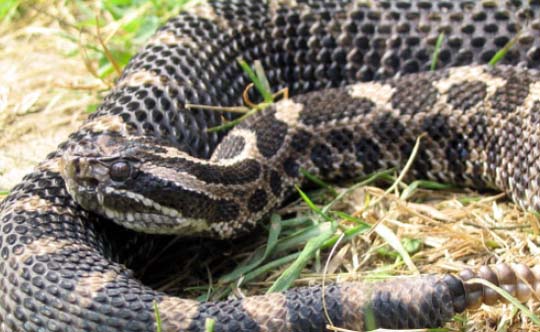
Endnotes
1 The COSEWIC status categories are as follows (taken from COSEWIC website):
Extinct (X) -- A wildlife species that no longer exists.
Extirpated (XT) -- A wildlife species that no longer exists in the wild in Canada, but exists elsewhere.
Endangered (E) -- A wildlife species facing imminent extirpation or extinction.
Threatened (T) -- A wildlife species likely to become endangered if limiting factors are not reversed.
Special Concern (SC) -- A wildlife species that may become a threatened or an endangered species because of a combination of biological characteristics and identified threats.
Data Deficient (DD) -- A category that applies when the available information is insufficient (a) to resolve a wildlife species’ eligibility for assessment or (b) to permit an assessment of the wildlife species’ risk of extinction.
Not At Risk (NAR) -- A wildlife species that has been evaluated and found to be not at risk of extinction given the current circumstances.
2 SARA related information, news and documents are stored and updated on the SARA Public Registry: www.sararegistry.gc.ca.
3 The general status categories are as follows (taken from Wild Species website):
0.1 - Extirpated -- species that have disappeared from (or are no longer present in) a given geographic area but occur in other areas. Species listed by COSEWIC as nationally Extirpated automatically receive an Extirpated general status rank. This general status rank applies at the national level and in whichever province/territory/ocean region the species formerly existed.
0.2 - Extinct -- species that are extirpated worldwide (i.e. they no longer exist anywhere). Species listed by COSEWIC as nationally Extinct automatically receive an Extinct general status rank. This general status rank applies at the national level and in whichever province/territory/ ocean region the species formerly existed.
1 - At Risk -- species for which a formal detailed risk assessment (COSEWIC assessment or provincial or territorial equivalent) has been completed and that have been determined to be at risk of extirpation or extinction (i.e. Endangered) or is likely to become at risk of extirpation or extinction if limiting factors are not reversed (i.e. Threatened). A COSEWIC designation of Endangered or Threatened automatically results in a general status rank of At Risk nationally. Where a provincial or territorial formal risk assessment finds a species to be Endangered or Threatened in that particular region, then, under the general status system, the species automatically receives a provincial or territorial general status rank of At Risk.
2 - May Be At Risk -- species that may be at risk of extirpation or extinction and are therefore candidates for a detailed risk assessment by COSEWIC or provincial or territorial equivalents.
3 - Sensitive -- species that are not believed to be at risk of extirpation or extinction but may require special attention or protection to prevent them from becoming at risk.
4 - Secure -- species that are not believed to belong in the categories At Risk, May Be At Risk, Extirpated, Extinct, Accidental, and Exotic. This category includes some species that show a trend of decline in numbers in Canada but remain relatively widespread or abundant. In such instances, the decline will be highlighted by an asterisk and an associated comment.
5 - Undetermined -- species for which insufficient data, information, or knowledge is available with which to reliably evaluate their general status.
6 - Not Assessed -- species that are known or believed to be present in the geographic area in Canada to which the general status rank applies but have not yet been assessed.
7 - Exotic -- species that have been moved beyond their natural range as a result of human activity. In this report, Exotic species have been purposefully excluded from all other categories.
8 - Accidental -- species occurring infrequently and unpredictably outside their usual range.
4 The biological reporting unit in the Wild Species 2005 report is the whole species. This is commonly considered to mean populations of organisms that do not usually interbreed with other populations, even where they overlap in space and time. This is different from the definition used by COSEWIC, as described in section 2 of SARA which defines a “wildlife species” as “a species, subspecies, variety or geographically or genetically distinct population of animal, plant or other organism, other than a bacterium or virus, that is wild by nature and (a) is native to Canada; or (b) has extended its range into Canada without human intervention and has been present in Canada for at least 50 years.”
The organizing body which oversees preparation of Wild Species reports selected whole as its unit for general status ranks for the Wild Species reports for several reasons. For one, whole species are the most common and recognizable units of biological classification used in conservation. While some divisions below the species level may deserve protection, there is less agreement over the precise limits and biological significance of differences observed at this finer scale. Moreover, technical, financial, and human resource limitations make it unfeasible to examine all species closely enough to distinguish candidate subspecies or populations or to determine their status.
Therefore, this report contains general status ranks only for species and not for subspecies or distinct populations.
5COSEWIC status reports are available on the COSEWIC website.
6 The Canadian Wildlife Directors Committee consists of the directors of wildlife of each province and territory, the five regional directors and Director General of the Canadian Wildlife Service, and one representative each of Fisheries and Oceans Canada and the Parks Canada Agency.
7 In October 1996, federal, provincial, and territorial ministers responsible for wildlife supported the creation of the Accord for the Protection of Species at Risk, which lays out basic principles of species conservation as well as a number of commitments to protect species at risk. (4 November 2008).
8 The General Status Search Tool on the Wild Species website provides realtime access to the general status ranks generated by the NGSWG. The search tool can be accessed at: http://www.wildspecies.ca/wildspecies2005/search.cfm?lang=e&sec=9.
9 For more information visit the COSEWIC website.
10General status assessment categories differ from those employed by COSEWIC. General status assessments use a coarse-filter approach in order to assess the greatest number of species possible. This requires a greater number of status categories in order to most accurately describe a species’ status. Species assigned a general status rank of May Be At Risk are candidates for a detailed risk assessment by COSEWIC (or provincial or territorial equivalents). Definitions of the criteria used in the general status ranking procedure follow Harper et al. (1996) and are based on the IUCN (The World Conservation Union) Red List Categories (IUCN 2001), CITES (Convention on International Trade in Endangered Species of Wild Fauna and Flora) Criteria for Amendment of Appendices I and II (Res. Conf. 9.24) (CITES 2000) and the Natural Heritage Programs and Conservation Data Centres of NatureServe.
Swift Fox ©Lu Carbyn
